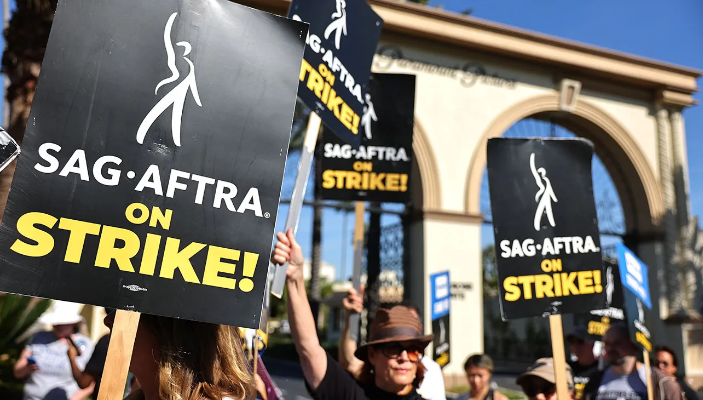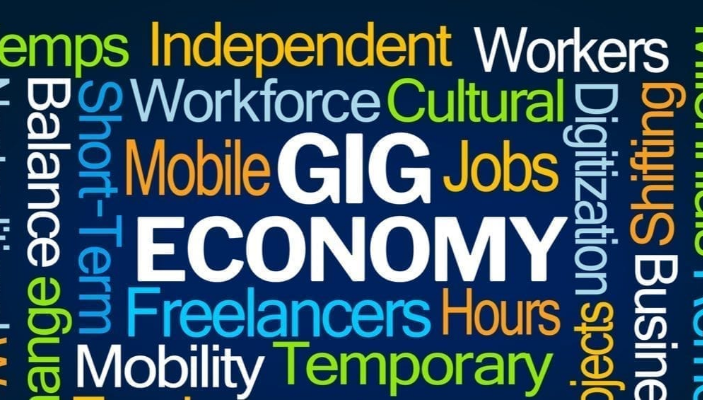The SAG-AFTRA Deal 2025
The SAG-AFTRA Deal 2025 marks a significant moment in Hollywood’s labor history. After months of tense negotiations between actors and studios, the new agreement reflects not only technological shifts like AI and streaming but also the ongoing fight for fair wages, creative control, and workplace protections.
This agreement isn’t just about contracts—it’s about redefining what it means to work in entertainment today. Below, we break down the major updates, key wins and compromises, and what this means for actors, studios, and the future of media.
The Road to 2025: How We Got Here
Rising Tensions Since 2023
The seeds of this deal were planted during the 2023 strikes, when both SAG-AFTRA and the WGA (Writers Guild of America) pushed back against studio practices that hadn’t kept up with the streaming economy.
Actors raised concerns over:
- Residuals from streaming platforms being unpredictable and opaque
- AI voice and likeness replication being done without consent
- A widening pay gap between studio executives and performers
- Lack of protections for background and voice actors
The 2023 strike resulted in partial wins, but SAG-AFTRA leaders made clear: more progress was essential in 2025.
Major Wins in the 2025 Agreement
1. Clear Guidelines on AI Usage
Artificial Intelligence was perhaps the most contentious issue. Studios had begun using machine learning to replicate voice, appearance, and even full performances. Actors feared this could render them obsolete.
The 2025 Deal includes:
- Consent-first rules: No actor’s voice or image can be used by AI without written permission.
- Usage transparency: Studios must disclose when AI has been used in post-production.
- Compensation clauses: If AI-generated work uses an actor’s past performance, residual payments must follow.
This is seen as a strong first step in protecting digital identity rights.
2. Streaming Revenue Transparency
Residual payments in traditional media have long followed clear schedules. But streaming services, especially platforms like Netflix and Amazon Prime Video, operate under subscription-based models that don’t release viewing figures publicly.
The 2025 Deal mandates:
- Studios must share viewership data with SAG-AFTRA confidentially.
- Residuals will now be performance-based, tied to viewership tiers.
- A new “Digital Bonus Pool” has been created from studio profits to reward high-performing content.
This model introduces a degree of fairness and performance-based earning that had been missing.
3. Wage Increases and Inflation Adjustment
After years of stagnation, actors demanded pay scales that reflect current economic realities.
The contract includes:
- An immediate 7% wage increase for union actors
- Annual cost-of-living adjustments indexed to inflation
- Updated minimums for background, commercial, and voice actors
These updates are vital for working-class performers, who often hold multiple jobs to stay afloat in the industry.
4. Protections for Background and Stunt Performers
These professionals form the backbone of every major production, yet are often the most overlooked.
New terms now require:
- Minimum daily rates for background actors to be respected across all states
- Enhanced safety training and insurance coverage for stunt professionals
- A clear AI opt-out clause for extras who don’t wish their images replicated digitally
By centering these performers, SAG-AFTRA shows a broader commitment to equity and safety on set.
5. Voice Actors and Animation Rights
With gaming and animation booming, voice performers demanded better representation.
Key additions:
- A streamlined grievance system to handle contract violations quickly
- Royalty-based payments on successful animated features and games
- Voice-to-AI conversion bans unless explicitly approved by the actor
The voice acting community applauded this protection of performance integrity.
Key Compromises and Ongoing Concerns
No negotiation ends with everything won. Some areas saw middle-ground solutions, leaving space for future bargaining.
AI in Background Roles
While explicit consent is required for AI duplication of leads, background actors only get partial protection. Studios lobbied hard to allow AI reuse of crowd shots or body doubles under specific limitations.
This is expected to be a point of continued debate in future contracts.
Streaming Transparency is Still Limited
While the confidential viewership sharing is an improvement, SAG-AFTRA does not have the right to publicly audit streaming data.
Critics say this limits accountability and could lead to disputes down the line.
Industry Response
SAG-AFTRA Members
Initial response has been largely positive. Union President Fran Drescher called it a “visionary win for artists across all platforms.”
Younger actors have especially praised the tech-forward nature of the deal, while veterans appreciated the return to fair wages and credit protections.
Studio Perspective
Studios framed the deal as a balanced compromise, noting that innovation must be paired with fairness.
Behind closed doors, however, some executives reportedly pushed back against the AI limitations, arguing that they would increase production costs.
Still, the consensus is that this deal avoids future strikes and brings labor peace to a critical industry.
Cultural Impact: What This Means for Media
Renewed Trust in the Union
SAG-AFTRA, which had faced criticism for being reactive rather than proactive, has emerged from this deal re-energized and respected. Younger members have especially responded to how future-facing the contract is, particularly in areas like digital rights and creator control.
Set Precedents for Global Industries
This contract may influence unions globally—from the UK’s Equity union to voice acting coalitions in Japan. As media continues to globalize, these protections could become industry-wide expectations.
Ethical Storytelling in the Age of AI
By formalizing consent, transparency, and fair payment for digital performance, this deal helps set moral boundaries around AI in entertainment.
Audiences, too, are becoming more vocal about AI manipulation, and this agreement acknowledges the need for ethical production.
What Comes Next?
2026 and Beyond
SAG-AFTRA has signaled that the next round of negotiations may include:
- Expanded ownership rights over actor likeness
- Royalties on AI-generated performances
- Global streaming royalty harmonization
As technology evolves, unions will likely need to renegotiate every few years—not decades—to stay relevant.
Union Solidarity Across Sectors
This win may fuel momentum for other entertainment and tech unions—from editors and set designers to gaming developers—who face similar issues around automation and fair wages.
Expect a rise in multi-union collaboration moving forward.
Conclusion: A Step Toward Fairer Futures
The SAG-AFTRA Deal of 2025 is more than a labor contract. It’s a document that reshapes how we think about creativity, compensation, and consent in a changing digital world.
By advocating for fairness, transparency, and ethical tech use, this agreement does something rare: it puts people first—before profits, before platforms, and before AI.
For actors, fans, and media workers alike, that’s a win worth celebrating.
5 Short FAQs
1. What is the SAG-AFTRA Deal 2025 about?
It’s a new labor agreement covering wages, AI rights, and streaming revenue for actors and media professionals.
2. Does the deal protect actors from AI misuse?
Yes, it requires consent before AI use of any actor’s voice or likeness and mandates compensation.
3. How does the deal impact streaming residuals?
Residuals are now tied to viewership tiers and supported by a new digital bonus pool.
4. Are background actors protected in this deal?
Yes, they receive improved wages and partial protection against AI duplication.
5. What does this mean for other global unions?
The deal sets a precedent and may influence similar labor contracts worldwide, especially in tech-driven industries.







